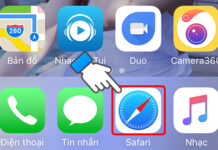By default, when not in use for a certain amount of time, an iPhone will automatically lock its screen. Primarily, this is done to conserve battery and to secure personal and private information on the phone, as well as prevent the iPhone from overheating if the screen is illuminated for too long.
However, you can opt to proactively change the iPhone screen lock settings to almost any timeframe to better accommodate your needs. Let’s delve into a simple step-by-step guide on how to set screen timeouts for your iPhone.
Customizing iPhone Screen Timeout Settings: A Detailed Guide
1. Disabling Auto-Screen Lock
To conserve battery life, by default, an iPhone automatically locks its screen after a period of inactivity (30 seconds). However, if you are actively working on your iPhone and it keeps auto-locking, the continuous unlocking can be quite bothersome. This is where you can set your iPhone’s screen timeout to “Never” to override this feature and prevent it from auto-locking. Here’s how you can do it:
Step 1: Launch the Settings app on your iPhone.
/fptshop.com.vn/uploads/images/tin-tuc/181406/Originals/meo-cai-dat-thoi-gian-tat-man-hinh-iphone-1.jpg)
Step 2: Scroll down and click on the Display & Brightness option.
/fptshop.com.vn/uploads/images/tin-tuc/181406/Originals/meo-cai-dat-thoi-gian-tat-man-hinh-iphone-3.jpg)
Step 3: On the subsequent page, click on the Auto-Lock option located toward the bottom. Afterward, select the Never option to proceed.
/fptshop.com.vn/uploads/images/tin-tuc/181406/Originals/meo-cai-dat-thoi-gian-tat-man-hinh-iphone-8.jpg)
2. Customizing Auto-Screen Lock Time Frame
If your iPhone is primarily used in a public setting like an office, a coffee shop, or any other crowded place. Setting the iPhone’s screen timeout to “Never” as mentioned above, might put you at risk of having your information compromised, as the iPhone’s screen won’t lock, thus making your data accessible to anyone who may get a hold of your phone.
In such cases, you can opt to set your iPhone screen to automatically lock after a specific period of inactivity. Here’s how you can do it:
Step 1: Launch the Settings app on your iPhone.
Step 2: Scroll down and click on the Display & Brightness option.
/fptshop.com.vn/uploads/images/tin-tuc/181406/Originals/meo-cai-dat-thoi-gian-tat-man-hinh-iphone-6.jpg)
Step 3: In the next screen, click on the Auto-Lock option positioned at the bottom, then choose a predefined screen lock duration for your iPhone (30 seconds, 1 minute, 2 minutes, 3 minutes, 4 minutes, and 5 minutes) that suits your preferences in order to complete the process.
Why Can’t I Change the Screen Timeout on My iPhone?
Some users may encounter a situation where they are not able to change the screen timeout duration of their iPhone, and the Auto-Lock setting appears to be grayed out. This primarily occurs when your phone has entered Low Power Mode, to conserve battery and extend its life.
When Low Power Mode is enabled, users are restricted from changing the screen timeout duration. To make necessary changes, you will need to disable Low Power Mode. Here’s how you can do it:
Step 1: Launch the Settings app on your iPhone.
/fptshop.com.vn/uploads/images/tin-tuc/181406/Originals/meo-cai-dat-thoi-gian-tat-man-hinh-iphone-1.jpg)
Step 2: Scroll down and click on the Battery option.
/fptshop.com.vn/uploads/images/tin-tuc/181406/Originals/meo-cai-dat-thoi-gian-tat-man-hinh-iphone-2.jpg)
Step 3: Toggle off the Low Power Mode option in the subsequent screen to proceed.
/fptshop.com.vn/uploads/images/tin-tuc/181406/Originals/meo-cai-dat-thoi-gian-tat-man-hinh-iphone-4.jpg)
You should now be able to alter your iPhone’s screen lock time without any issues.
Reasons to Adjust Screen Lock Time on an iPhone
There are three primary reasons why you might want to make changes to the screen lock time settings on your iPhone:
- Ease of Use: Having your iPhone’s screen lock prematurely and having to unlock it multiple times a day while using it can be quite inconvenient. If you have trouble unlocking it, increasing the screen lock time might be a better option.
- Battery: Keeping your iPhone’s screen illuminated for a long period of time consumes a significant amount of battery power. So, if you set your iPhone’s screen timeout duration to a longer time, you will notice a visible decrease in your phone‘s battery life. Keeping the screen lock time to a shorter duration can help your iPhone’s battery last longer before needing a recharge. It is also one of the most effective ways to extend the battery life of your iPhone when necessary.
- Security: Security is perhaps the most important reason to have control over the screen lock time of your phone. The longer your iPhone is unlocked, the greater the opportunity it gives someone unauthorized access to personal and private data, such as messages, photos, banking information, and health information, stored on your phone. A shorter screen lock time enhances the security of your iPhone as there is a reduced window to access your data without the necessary passcode.
Why the iPhone 14 Plus is Perfect for You: New Reasons to Buy It
Are you considering purchasing the brand new iPhone 14 Plus? Find out if this tech-savvy device is right for you with our in-depth review of Apple’s latest release. We’ll break down its features, specs, and more to help you decide if the iPhone 14 Plus is worth the investment. Keep reading to learn more!

































